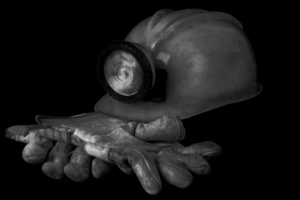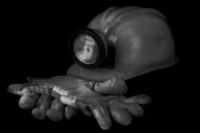 On the night of March13, Mine Safety and Health Administraton (MSHA) inspectors paid an unannounced visit to Redhawk Mining LLC, Redhawk # 1 Mine in Floyd County, Ky. After securing mine communications to make sure those underground weren't given advance notice, the enforcement team got busy. Their focus? Whether or not the mine was complying with the approved ventilation plan -- a plan that, if followed, would lessen the chances of miners contracting diseases associated with the inhalation of respirable coal mine dust such as pneumoconiosis, silicosis, bronchitis and emphysema.
On the night of March13, Mine Safety and Health Administraton (MSHA) inspectors paid an unannounced visit to Redhawk Mining LLC, Redhawk # 1 Mine in Floyd County, Ky. After securing mine communications to make sure those underground weren't given advance notice, the enforcement team got busy. Their focus? Whether or not the mine was complying with the approved ventilation plan -- a plan that, if followed, would lessen the chances of miners contracting diseases associated with the inhalation of respirable coal mine dust such as pneumoconiosis, silicosis, bronchitis and emphysema.
The Redhawk inspection was described in the MSHA's recently released March impact inspections report. These inspections, which began in force in April 2010 following the explosion at the Upper Big Branch Mine, involve mines that merit increased agency attention and enforcement due to their poor compliance history or particular compliance concerns, including high numbers of violations or closure orders; frequent hazard complaints or hotline calls; plan compliance issues; inadequate workplace examinations; a high number of accidents, injuries or illnesses; fatalities; and adverse conditions such as increased methane liberation, faulty roof conditions and inadequate ventilation.
The Redhawk mine has a history of "liberating methane," according to the MSHA. Although the mine operator had been told to increase compliance efforts, the inspectors found that required air quantities in idle and active coal faces, as approved in the mine's ventilation plan, were not being maintained, and the type and number of water sprays for respirable dust control were not in compliance. The operator was failing to use a line curtain, nine of the 27 water sprays were the wrong type, one spray was plugged and six others were improperly oriented.
From the MSHA report:
"Inspectors found that mine examiners failed to conduct adequate on-shift examinations during the production shift. Many obvious and extensive hazards were identified on the active MMUs, including accumulations of combustible material in the form of loose coal and coal dust, not maintaining the approved dust control parameters and not complying with the approved ventilation plan. The mine was shut down for 72 hours. These deficiencies appear to have existed for an extended period. All mine examiners subsequently were trained on proper examinations and monitored by MSHA personnel, and the entire workforce was trained on the new ventilation plan. Approved ventilation plans are designed to control methane liberation, protect miners from black lung and prevent the risk of frictional methane face ignitions."
"The closure order is still one of the most effective tools inspectors have to bring about compliance, even during impact inspections," said Joseph A. Main, assistant secretary of labor for mine safety and health. "We will not hesitate to use these and other enforcement tools to protect the nation's miners."
The Redhawk mine was not the only one to get a special impact inspection during March; 249 violations were issued to nine coal mines and two metal/nonmetal mines. The coal mines were issued 187 citations, 25 orders and two safeguards, while the metal/nonmetal operations were issued 35 citations.
Since the big push began in April 2010, MSHA has conducted 431 impact inspections at coal and metal/nonmetal mines. These inspections have resulted in 7,642 citations, 757 orders and 28 safeguards for a total of 8,427 issuances.
Under cover of darkness...



